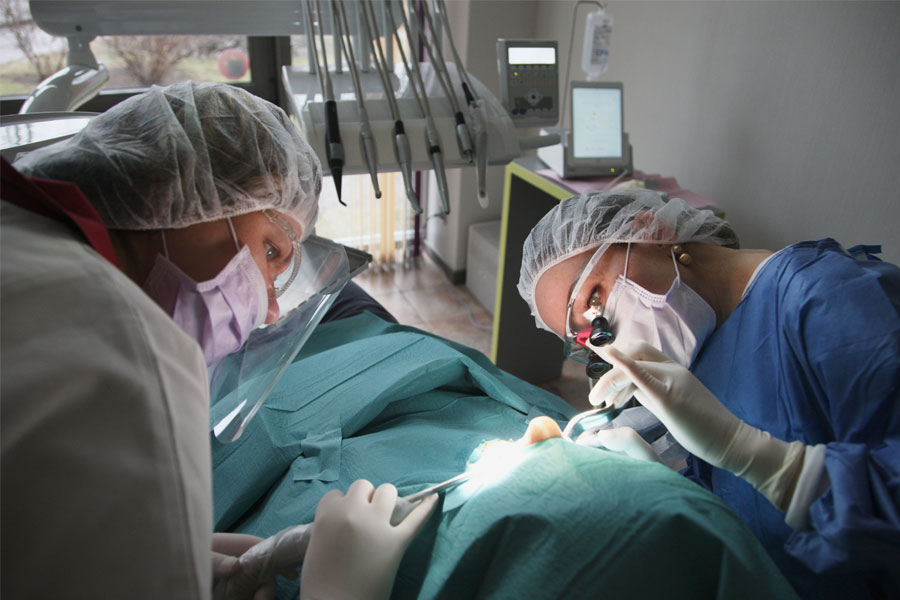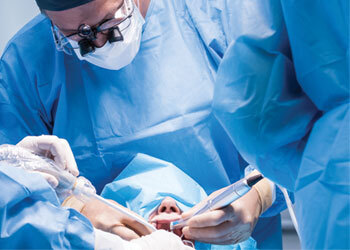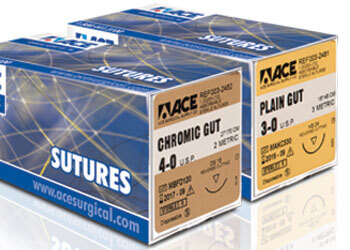Navigating Bone Grafting Products for Dental Surgical Applications

Given that bone needs a physical structure, as well as growth factors, the right grafting product can predictably improve patient outcomes. It provides these elements to ensure healthy bone growth factors; most importantly, minimizing bone loss. Thus, when choosing a bone grafting product, it is crucial to consider several factors regarding the patients themselves, including their age, tobacco use, and co-morbidities, as well as the desired time to re-enter the site for additional work.
During bone repair, it is vital to create an optimal microenvironment that promotes healing. Physical bridges, or scaffolding, are required as the bone does not heal over open spaces. It’s important to remember that bone repair takes approximately 20 weeks; however, in the oral mucosa, the soft tissue takes less; around 3 weeks. These different healing rates require a separation of micro-environments, so that both areas have the best possible chance to heal completely. Bone grafting products are often required, as they provide essential growth factors to promote healing and aid in the natural restorative process through all stages of recovery.
Bone repair relies upon the re-vascularization of the wound site; ample blood flow brings new cells and nutrients ideal for repair. If angiogenesis - the development of new blood vessels - in the wound site is weak, bone restoration is unlikely to be successful. Even with the aid of the right extracellular matrix proteins from blood, it may not be sufficient to support good bone growth for most patients.
Patients are key, but when considering the mechanism of bone repair it is also essential to select the most appropriate bone grafting product. There are three major mechanisms to consider:
- Osteoconductive grafting material provides strong scaffolding material on which new bone can form.
- Osteoinductive substances provide the microenvironment with signals that trigger bone formation - the ability of bone-forming cells in the grafting area to move across a scaffold and slowly replace it with new bone over time.
- Osteogenic grafting materials contain bone forming cells that promote bone formation.
There are a diverse range of bone grafting products for you to consider:
alloOss Allograft is offered in particulate, block and putty, and is a safe, predictable and effective solution for providing a scaffolding for cell ingrowth and promoting the growth of new bone. alloOss mineralized Allograft Particulates and Blocks preserve natural collagen and minerals with the bony structure of allograft. While, alloOss Allograft Putty combines demineralized bone with cancellous bone and an organic based carrier. Healing usually takes about 3-4 months to complete.
NuOss natural cancellous and cortical bone matrix is produced by the removal of all organic components from bovine bone. Due to its natural porous structure, NuOss is physically and chemically comparable to the mineralized matrix of human bone. NuOss may be used with autogenous bone where there is an insufficient quantity of bone to fulfill the needs of the proposed surgical procedure. The NuOss line of products will, on average, remodel and support placement of an implant within 6-9 months.
synOss Synthetic Mineral is an osteoconductive calcium phosphate-based bone graft material with a carbonate apatite structure similar to the structure of human bone. Healing with synOss can be as short as 2 months.
While the products mentioned above are safe, efficient, and similar bone grafting options, it may be the case that an autograft - tissue from the same individual - is preferred. However, when an autograft procedure or the traditional bone grafting products are not appropriate for a particular patient, consider alloOss® Plus; an allograft that mimics the biological profile of an autograft.
Ultimately, the goal for bone repair is to create an optimal microenvironment that promotes maximum healing. You may not always have perfect patients, and you can’t always rely on autografts, so you’ll need bone grafting products to promote the best outcome.
Thomas E. Uveges, PhD is the Vice President of Biologics, ACE SOUTHERN in Brockton, Massachusetts. He received his PhD in Cell Biology from the University of Cincinnati in 2002. He then completed a fellowship at the National Institutes of Health focusing on bone biology in 2007. After his fellowship, Dr. Uveges moved into industry where he has spent over 10 years developing products for use in bone biology research and in regenerative medicine. He has worked in a wide array of therapeutic areas including orthopedics, sports medicine, wound care and dentistry.



